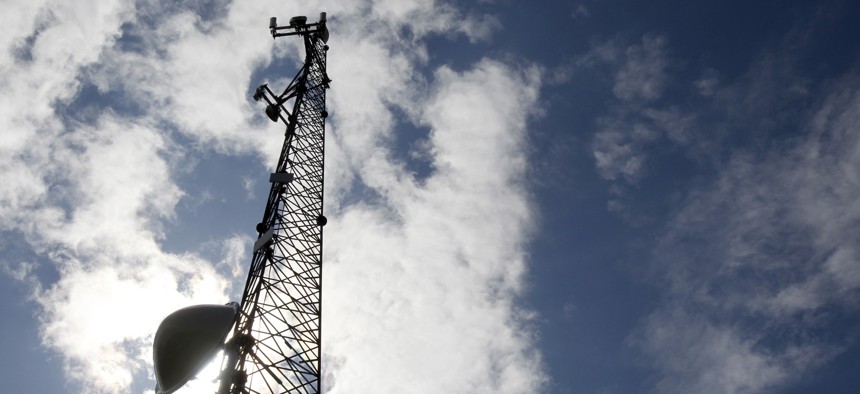Pandemic Drives Delaware to Pinpoint Internet Connectivity Speeds

A new broadband tower rises into the sky on Wednesday, June 6, 2012 in Plainfield, Vt. AP Photo/Toby Talbot
The coronavirus pandemic has shown a spotlight on the digital divide and Delaware is hoping to gather more precise data on broadband deserts and connection speeds to help guide its broadband expansion plan.
Delaware routinely ranks among the top states in the nation for internet connectivity. Average internet speeds in the state are 80 mbps and 95% of the population has access to wired broadband.
But the coronavirus pandemic has brought into sharp focus the difficulty states face in ensuring all residents have access to high-speed internet—even those relatively ahead of the curve like Delaware.
To better understand where help is needed, the state is leveraging federal CARES Act funding to conduct its first ever survey of residents to assess their internet connection speeds.
State officials know the general areas where connectivity is poor—rural counties including Kent and Sussex among them—but federal broadband maps are notoriously unreliable and the state’s infrastructure has gotten to the point where more specificity is needed to ensure its remaining residents are connected, said Delaware’s acting Chief Information Officer Jason Clarke.
“Within those areas there are pockets where it is good and spots where it is not,” Clarke said. “We really want that specificity.”
The survey, which residents can perform themselves online, will allow state officials to gauge the speed of residents’ internet connections, or lack thereof, as well as to gather data about the type of internet service they have and the devices they use to connect.
The results of the survey, which will wrap up in October, will be used to provide guidance as the state makes strategic decisions about how best to continue with broadband deployment.
Connecting rural counties has always been a difficult task for local governments. Private companies do not always have the financial incentive to expand into sparsely populated areas or to run last-mile connections to a handful of homes.
Demonstrating the problem, Clarke said his office recently received an inquiry from a resident without broadband who was told by a service provider that it would cost $14,000 to run service from existing cables to their home.
“It’s just too much to run that from the road to the house. We see that time and time again,” Clarke said. “It could be farmland, or a big acreage but if someone has a long driveway, that takes them out of the running.”
So, in addition to the speed survey, Delaware is also spending CARES Act funding to build out additional internet infrastructure and to subsidize the cost for low-income families to obtain internet access so their children can attend online classes.
The Delaware Department of Technology and Information partnered with internet service provider Bloosurf in 2019 to install wireless broadband technology on 15 towers in areas deemed “broadband deserts.” The project will be completed four months early thanks to an additional $566,000 in CARES Act funding. Overall, the initiative is expected to connect 1,500 customers with broadband.
To build on those expansions, Clarke said the state has set aside $5.9 million to incentivize internet service providers to move forward on “shovel ready” projects that will to expand
broadband connectivity in rural areas.
“A lot of times they are willing to expand the service if there is more development expected in that area,” he said.
Schools in the state are expected to continue remote learning for the time being, making internet connectivity an even greater priority for students. To ensure students are able to attend online classes, the state set aside $13 million to pay for internet services for low-income families.
In areas where broadband is available, the state could cover the monthly service costs, which Clarke said could be $10 to $15 a month based on some providers’ rates for low-income families. But in areas where wired connections are not available, the state could pay for mobile connection devices or cellular internet connections that would be more expensive and vary based on usage.
Andrea Noble is a staff correspondent with Route Fifty.
NEXT STORY: Air Force, AT&T push ahead with 5G testing





